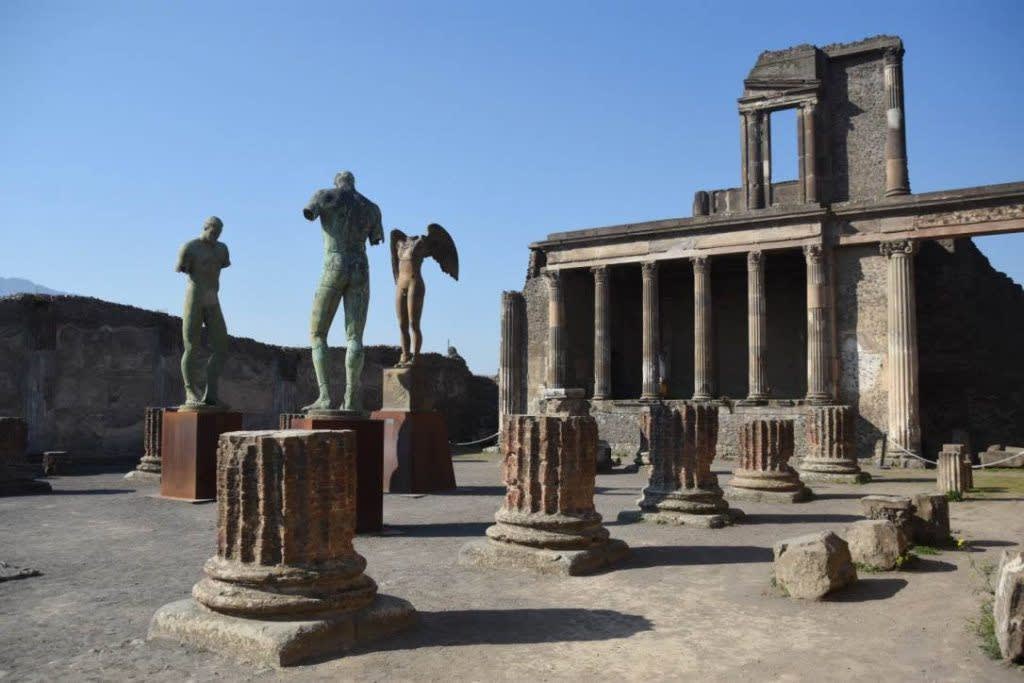The archaeological classicism of Pompeii and the contemporaneity of Mitoraj’s art – one never overwhelming the other – establish a harmonious, dialectic bond that emphasis and enhance the historical solemnity of the excavations as much as the delicate figures of the master sculptor.
Professor Emmanuele F. M. Emanuele, the Chairman of the Fondazione Terzo Pilastro states, “This exhibition conceived and promoted by the Fondazione Terzo Pilastro –Italia e Mediterraneo, represents a desired continuation of the previous exhibition in 2011 at the Valley of the Temples in Agrigento and was born from an idea cultivated by myself and the Maestro, precisely in Agrigento. The excavations of Pompeii today welcome the monumental sculptures of Mitoraj in the same way that a theatre would welcome the performance of its actors. As previously experimented, beauty is blended with ancient history as it dialogues with a contemporary artistic expression in a perfect symbiosis between ancient and modern. In this respect, Mitoraj was a true master: his style in fact, although entrenched in classic tradition with a post-modern twist, draws from Mediterranean historical patrimony and is conceived – in my opinion – as a sea of encounters between people, civilisations and culture”.
“Gods and mythological heroes will populate the streets and the squares of the city buried by the eruption of Mount Vesuvius, and emerge from the ruins like a vision”, states Massimo Osanna, General Director of the Superintendency of Pompeii. “The mute and iconic symbols in Mitoraj’s works, in their immanence, recall the profound classic values of classicism in a contemporary culture. In 1852 Théophile Gautier wrote, ‘In Pompeii, two steps separate ancient life from the modern’ ”.
Nearly thirty monumental bronze sculptures were placed in diverse sections of the archaeological site – from the Sanctuary of Venus to the Forum, from the via dell’Abbondanza to the Stabian Baths and up to the Quadriporticus of the Theaters. The massive and elegantly sculpted figures, inspired from the classic iconology of myths and legends, co-habit alongside the architecture of ancient Pompeii – Daedalus and the Sanctuary of Venus, the Centaur and the Forum, the Centurion at the Stabian baths and Ikaro alato at the triangular Forum. This grandiose project injected new lifeblood into one of the most important archaeological areas in the world.
On 14th May in the Quadriporticus of the Theatres, inside the archaeological site, the vernissage of the exhibition took along with the presentation of the catalog with exclusive photographic images by Giovanni Ricci-Novara and critical essays by Richard Cork and Eike Schmidt.




 W: +39 3357055914
W: +39 3357055914